
Female

Male
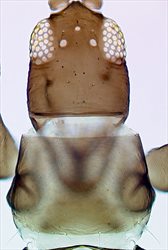
Head & pronotum
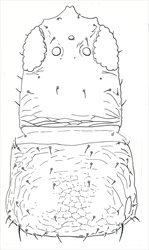
Head & pronotum

Antenna

Antenna
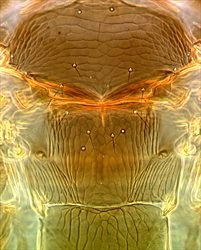
Meso & metanota
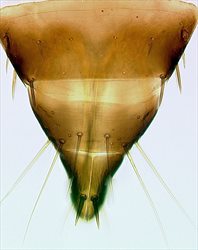
Female tergites VIII-X

Thoracic sternites

Fore wing
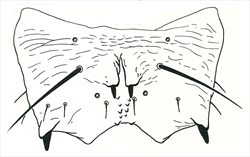
Male tergite IX
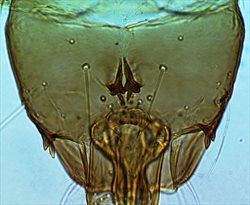
Male tergite IX
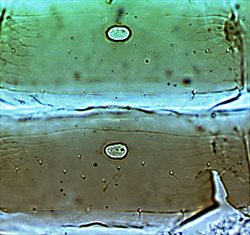
Male pore plates
Female fully winged. Body brown, tarsi and antennal segment III yellowish; fore wings light brown. Antennae 8-segmented; segment III asymmetric, apex with simple sense cone; IV with sense cone simple. Head longer than wide, projecting in front of eyes; three pairs of ocellar setae present, pair III anterolateral to triangle, scarcely longer than distance between two ocelli; maxillary palps 2-segmented. Pronotum with one pair of long posteroangular setae. Metanotum reticulate, campaniform sensilla present, median setae arise behind anterior margin. Fore wing first vein with 2 setae on distal half, second vein with about 8 setae. Abdominal tergites reticulate medially, with one pair of campaniform sensilla close to posterior margin; craspedum not developed; tergite X with one pair of stout thorn-like setae at posterior. Sternites II–VII with 5–10 discal setae, without craspeda.
Male wingless, without ocelli on head; tergite IX medially with pair of stout thorn-like setae on tubercles, posterolateral pair of setae also short and stout; sternites III–VII with small sub-circular pore plate.
Although eight species are listed in the genus Limothrips, no more than six of these are likely to be valid (zur Strassen, 2003). They all live on various grasses, and are distinguished from other grass-living Thripinae by the stout pair of thorn-like setae at the apex of the tenth abdominal segment. Although they are originally from Europe, three species are now widespread around the world. L. cerealium has neither antennal segment III produced outwards nor stout setae on tergite IX.
Feeding and breeding on the leaves and in the flowers of grasses and cereal crops. Following the build-up of large populations in summer cereal crops this thrips can appear in swarms, and is referred to colloquially as thunderflies. Kirk (2004) discussed possible causal mechanisms for this phenomenon that is commonly associated with stormy weather in Britain and other parts of Europe.
Widespread and common, and recorded across Britain from Kent to the Orkney Islands, and also from both Northern Ireland and the Republic of Ireland (Mound et al., 1976; O'Connor, 2008), this species is abundant across Europe. It has also been introduced into, and is now found in, many temperate areas around the world.
THRIPIDAE - THRIPINAE
Limothrips cerealium (Haliday)
Thrips (Limothrips) cerealium Haliday, 1836: 445
Limothrips avenae Hinds, 1902: 139
Limothrips cerealium f. aptera Karny, 1914: 56
Limothrips minor Bagnall, 1927: 565
Limothrips cerealium f. adusta Maltbaek, 1927: 14
Limothrips cerealium ssp. astutus Priesner, 1964: 115
Limothrips syriacus Jenser, 2009: 83
Kirk WDJ (2004) The link between cereal thrips and thunderstorms. Acta Phytopathologica et Entomologica Hungarica 39 (1-3): 131–136.
Mound LA, Morison GD, Pitkin BR & Palmer JM (1976) Thysanoptera. Handbooks for the Identification of British Insects 1 (11): 1–79.
O’Connor JP (2008) A review of the Irish thrips (Thysanoptera). Irish Naturalists’ Journal 29: 20–24.
zur Strassen R (2003) Die terebranten Thysanopteren Europas und des Mittelmeer-Gebietes. Die Tierwelt Deutschlands 74: 1–271.